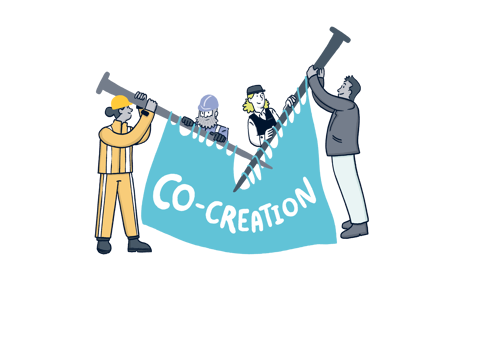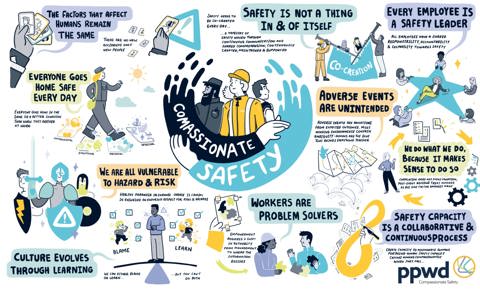In 2011 Paul Davison co-founded PPWD. We wanted to create a business that reflected our values. Consequently we have built a business with an absolute focus on our clients needs, a business that takes a long term view and a business that values long term partnerships rather than short term profit. We believed that if we value the relationship between us and our clients and us and our associates then success would follow. These beliefs still underpin everything we do today.
Our Purpose is what we are aiming for.
Our Vision is why we do this.
Our Mission is how we do this.

And Compassionate Safety in one image?

The PPWD values
People
People naturally solve problems.
People require environments where they can thrive and flourish. Being people-centric means creating environments that bridge the gap between what is prescribed and what is done.
Practice
Practice, and we act deliberately.
Practice brings a focus on goals and invigorates growth mindsets to stretch. The action incorporates constructive feedback and becomes the foundation of successful long-term learning cultures.
Wonder
Wonder, and we desire to know something.
something. Wonder is a curiosity, an inquisitiveness to understand. Our methods engage and activate wonder which leads to and feeds learning.
Develop
Develop, and we naturally evolve within learning environments.
Development encourages and supports the growth of systems, teams and individuals. Through development, resilience, capacity and adaptability are co-created.
A team of passionate experts
Our history
In many respects PPWD started by accident.
In 2011, on leaving the Royal Air Force, an opportunity presented itself to design and deliver a leadership course for a Middle Eastern client. Paul Davison and Paul White became PPWD.
The motivation and driving force throughout our first leadership project and subsequent entry into rail and freight, were, ‘how could we make a difference, how can we make it better for all concerned?
The impact of our courses gained the attention of ever-increasing management levels, until we were able to also undertake boardroom, and heads of department workshops. Simultaneously, our industry portfolio has expanded into manufacturing, energy, and infrastructure.
Throughout PPWD’s existence there has been a curiosity, a thread of wonder. An inquisitiveness to both know more, and to know in greater depth, a richness of being. Why do we do what we do? Why do those things sometimes lead to sub-optimal outcomes, adverse events and deviations from expected outcomes? Why and how did they make sense at the time?

